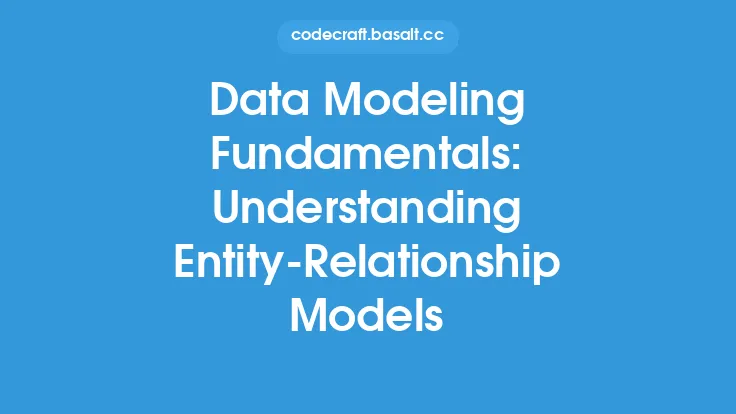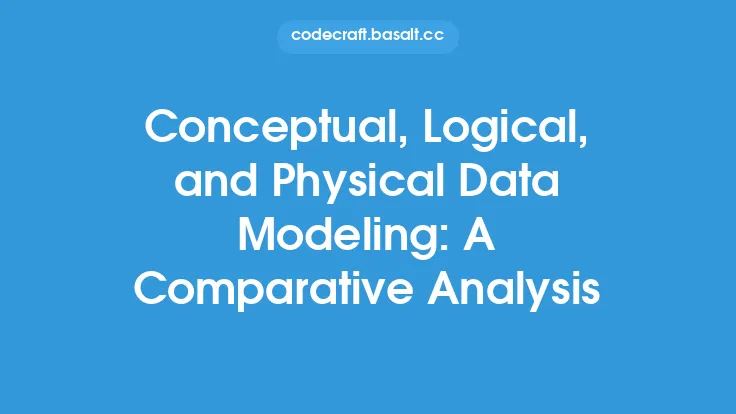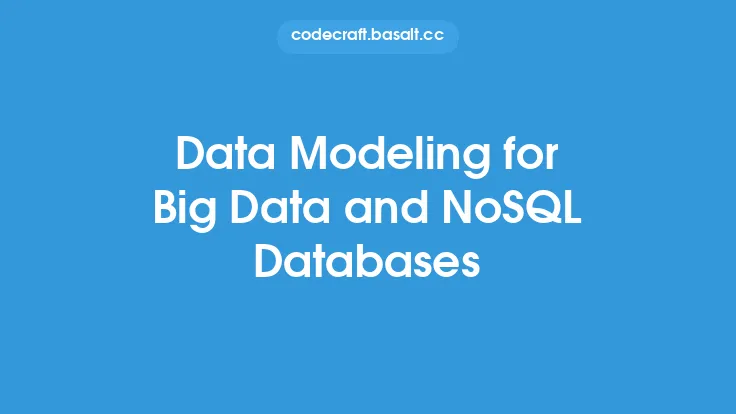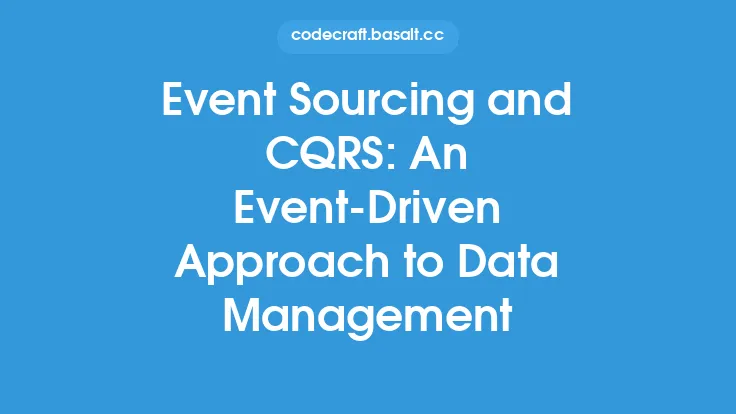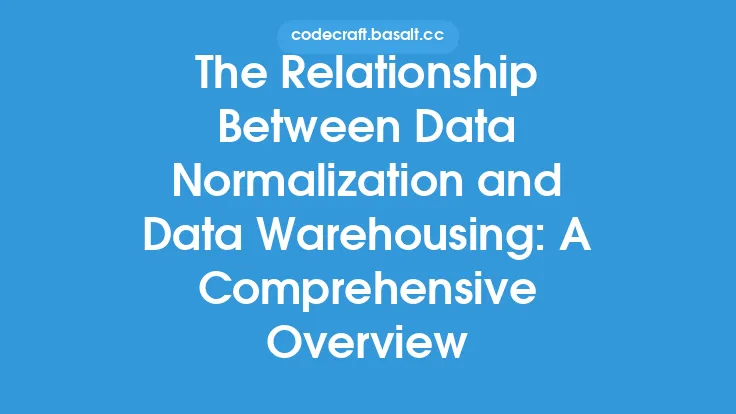Entity-attribute-value (EAV) modeling is a data modeling approach that allows for flexible and dynamic representation of data. It is particularly useful in situations where the data structure is complex, constantly changing, or needs to accommodate a wide range of attributes. In traditional data modeling approaches, such as entity-relationship modeling, the data structure is predefined and rigid, making it difficult to adapt to changing requirements. EAV modeling, on the other hand, provides a more flexible and scalable solution.
Introduction to EAV Modeling
EAV modeling is based on a simple yet powerful concept: each piece of data is represented as a combination of three components: entity, attribute, and value. An entity is an object or a concept that has attributes, which are characteristics or properties of the entity. A value is the actual data associated with an attribute. For example, in a customer database, "John Doe" might be an entity, "age" might be an attribute, and "30" might be the value associated with that attribute. This approach allows for a flexible and dynamic representation of data, as new attributes and values can be added or removed as needed.
Key Components of EAV Modeling
The key components of EAV modeling are entities, attributes, and values. Entities are the objects or concepts being described, and they can be anything from customers and products to orders and transactions. Attributes are the characteristics or properties of the entities, and they can be anything from names and addresses to prices and quantities. Values are the actual data associated with the attributes, and they can be anything from strings and numbers to dates and timestamps. In EAV modeling, each entity can have multiple attributes, and each attribute can have multiple values.
Benefits of EAV Modeling
EAV modeling offers several benefits, including flexibility, scalability, and improved data integrity. The flexibility of EAV modeling comes from its ability to accommodate changing data structures and requirements. As new attributes and values are added or removed, the data model can adapt without requiring significant changes to the underlying database structure. This makes EAV modeling particularly useful in situations where the data structure is complex or constantly changing. The scalability of EAV modeling comes from its ability to handle large amounts of data and complex relationships between entities. By representing each piece of data as a combination of entity, attribute, and value, EAV modeling can handle complex data structures and relationships with ease. Improved data integrity is another benefit of EAV modeling, as it allows for strict data validation and normalization.
Challenges and Limitations of EAV Modeling
While EAV modeling offers several benefits, it also has some challenges and limitations. One of the main challenges of EAV modeling is its complexity, as it can be difficult to understand and manage the relationships between entities, attributes, and values. This can make it challenging to query and analyze the data, particularly for users who are not familiar with the EAV modeling approach. Another limitation of EAV modeling is its potential impact on performance, as the flexible and dynamic nature of the data model can lead to slower query times and increased storage requirements. Additionally, EAV modeling can be more difficult to implement and maintain than traditional data modeling approaches, particularly for large and complex databases.
Implementing EAV Modeling
Implementing EAV modeling requires a deep understanding of the data structure and requirements, as well as the ability to design and implement a flexible and scalable database. The first step in implementing EAV modeling is to identify the entities, attributes, and values that will be represented in the database. This requires a thorough analysis of the data structure and requirements, as well as a clear understanding of the relationships between the different components. Once the entities, attributes, and values have been identified, the next step is to design the database structure, which typically consists of three tables: an entity table, an attribute table, and a value table. The entity table stores information about the entities, the attribute table stores information about the attributes, and the value table stores the actual data associated with the attributes.
Querying and Analyzing EAV Data
Querying and analyzing EAV data can be challenging, particularly for users who are not familiar with the EAV modeling approach. One of the main challenges is the need to navigate the complex relationships between entities, attributes, and values, which can make it difficult to write efficient and effective queries. To overcome this challenge, it is essential to have a deep understanding of the data structure and requirements, as well as the ability to use advanced querying and analysis techniques. Some common techniques for querying and analyzing EAV data include using pivot tables, creating views, and leveraging data warehousing and business intelligence tools.
Real-World Applications of EAV Modeling
EAV modeling has a wide range of real-world applications, including customer relationship management, product information management, and healthcare data management. In customer relationship management, EAV modeling can be used to represent complex customer data, such as demographics, preferences, and behavior. In product information management, EAV modeling can be used to represent complex product data, such as features, specifications, and pricing. In healthcare data management, EAV modeling can be used to represent complex patient data, such as medical history, diagnoses, and treatments. Other real-world applications of EAV modeling include e-commerce, finance, and education.
Best Practices for EAV Modeling
To get the most out of EAV modeling, it is essential to follow best practices, such as keeping the data model simple and intuitive, using clear and consistent naming conventions, and leveraging data validation and normalization. It is also essential to have a deep understanding of the data structure and requirements, as well as the ability to design and implement a flexible and scalable database. Additionally, it is essential to consider the potential impact on performance and to use advanced querying and analysis techniques to overcome the challenges of querying and analyzing EAV data. By following these best practices, organizations can unlock the full potential of EAV modeling and achieve improved data integrity, flexibility, and scalability.
